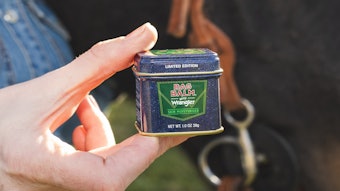Anyone from preschoolers to teens and moms to grandmas can enjoy self-expression or a beauty boost with painted nails. Yet, even with a wide consumer base, the category is rather shallow. With a global value of $3.3 billion, according to Euromonitor International, nail products is both the smallest color cosmetics category and the least dynamic. But there is hope for the future.
The Art of Nude
The preference for healthy, bare nails contributed to declines in some of the biggest markets between 2001 and 2006, reports Euromonitor, notably the U.S., the U.K., France, Germany and Italy. Marketers are addressing this trend by providing customers with products that make their natural nails appear healthier and brighter—Avon’s Nail Expert and OPI’s Nail Envy are examples. “We are seeing innovation in the nail care segment of the market—more activity in reparative, nutritive products,” said Cara Robinson, Avon’s executive marketing director of U.S. color.
Products enriched with light microsensors to produce an intense color and shine, such as Bourjois’ Affinité, also enhance the
au naturale look.
“The natural look is a continuing trend, and I am always developing new sheer and natural colors that are universally flattering on all skin tones,” added Essie Weingarten, founder of Essie nail polish.
Competition from salons is also having an effect—particularly in the U.S., which, at $592 million in 2006, is the world’s largest nail products market, according to Euromonitor. As the at-home nail polish market tries to win back consumers from salons, marketers are concentrating on developing new color collections and adding nudes and neutrals to their existing palettes.
Recently, however, the market has received a boost from renewed interest in color and, notably, the resurgence of black polish. Dark nail color shades continue to be the hottest current trend, especially deep, dark blue. OPI’s Russian Navy nail lacquer is one such trendsetter, which has been updated with Yoga-ta Get This Blue! from the brand’s 2008 India Collection.
One of the few ways for companies to renew interest is to keep colors coming. “One would think the market is saturated, but the need for new colors and selection never ends,” said Carolyn Cianciotto, creator of Carolyn New York, citing that consumers are always looking for what’s new and what’s on-trend.
“Trend colors pique interest, and while not everyone will want to wear a black nail polish, they may want to try something less bold but in the same color range,” added Weingarten.
Muted pastels in shades of gray and taupe along with brighter, bolder colors, primarily for toes, are among color trends for spring. “Nails go bright in shades of fuchsia, coral, orange and red to complement colorful hues on the spring runways, although dark and neutral tones also will be popular,” said Suzi Weiss-Fischmann, executive vice president and creative director, OPI.
Winning Strategy
While colors are of utmost importance, marketing strategies that appeal to consumers’ softer side are the key. According to Carolyn Cianciotto, it’s about the creativity of the names and the stories behind them. All of the Carolyn New York nail colors, for example, are named after experiences in the Big Apple, and the stories pique consumer interest. “We want to connect with them and build a loyalty and relationship,” said Cianciotto. “We want consumers to feel like they’re buying something personal.”
Brands in general are working to present nail wear as a fun accessory for overall beauty, something that can be done easily at home. “Products will have to be multi-beneficial and presented in a way that’s emotional—as a fashion or beauty accessory—but also functional,” explained Avon’s Robinson.
In addition to four seasonal nail polish collections, Essie launches special collections, such as an upcoming bridal series, and colors developed through special partnerships. The most recent partnership was the Essie E! Live from the Red Carpet red polish, developed in partnership with E! Entertainment. Essie has several other high-profile partnerships in the works as well. “We utilize a strategic advertising campaign and a full-scale public relations program that reaches the fashion and beauty authorities,” said Weingarten. “Our strategic partnerships play a significant role in successful launches.”
Convenience To Go
Fast and easy application is a priority for the modern makeup user, and flat brushes for seamless, even applications of nail lacquer are being redesigned with this in mind.
OPI’s exclusive ProWide Brush is “extravagantly lush” and thick, precisely designed so that the specially shaped bristles align in a stack to create a smooth, flat surface. “This revolutionary design allows the brush to hold more nail lacquer, spread it more evenly, and deliver a streak-free application,” explained Weiss-Fischmann.
Bourjois 1 Seconde, enriched with fast-drying silicones, also boasts a patented extra-broad “smart” brush that adapts to the size of each nail to provide one stroke application. The unique bottle cap and brush is held like a pen, featuring “non-skid zones” for a firm grip.
Mass-market brands also have to compete with salon application, which tends to look smoother and last longer, and this requires packaging and ingredient innovations. Maybelline’s newest edition positions itself against such results. Salon Expert Nail Color features an exclusive curved precision brush that “hugs every curve for professional results.” It also boasts iron and calcium for added strength to help prevent breaks and splits so the self-manicure lasts longer.
Similarly, Sally Hansen recently launched Salon nail lacquer with a patented formula featuring pure, micromilled pigments and silicone for the “ultimate application, color and shine,” as well as a 650-bristle professional brush for a streak-free application. Special ingredients include a natural mineral complex and epoxy resin bond for hard, durable color, and UV protectors to help colors stay true.
Nail polish is also likely to appear on the UV radar screen as innovations utilize the potential of titanium or zirconium oxide nanoparticles to filter UV rays and improve nail polish resistance. For example, Avon’s UV Gloss Guard Top Coat, introduced in 2005, features a built-in sun protection to keep nails looking glossy while helping to prevent yellowing and fading.
Convenience also means fuss-free applications and quick-drying formulations, and there are new expectations that nail products be increasingly free of toluene, formaldehyde and DBP—and that is both home nail products’ challenge to the professional market and a formulation challenge. “We are always looking at ways to create products that are better for the environment, using more natural ingredients,” said Essie Weingarten.
Companies that don’t have the retail advantage, such as Avon, continue to position nail as the final step in a total home beauty regimen, positioning nail lacquer as a fashion accessory to complete every look. “We have to continuously provide a compelling communication story, with products that back it up, that replicates the salon look at home,” said Robinson. According to Robinson, this means quick-drying, long-wearing or strengthening enamel plus great color. “We are currently exploring a range of new acrylate polymer technologies that are enabling us to make nail polishes for home use that have great, long-wearing shine,” added Josie Adams, executive R&D director, Avon.
New colors and application technology could renew interest in a market lacking major innovation. It may not convince consumers who prefer the natural look, but could appeal to those who are not willing to invest in professional manicures. While such conveniences are unlikely to help nail polish exceed current lackluster forecasts, according to Euromonitor, it offers nail polish brands new hope in reviving sales.










